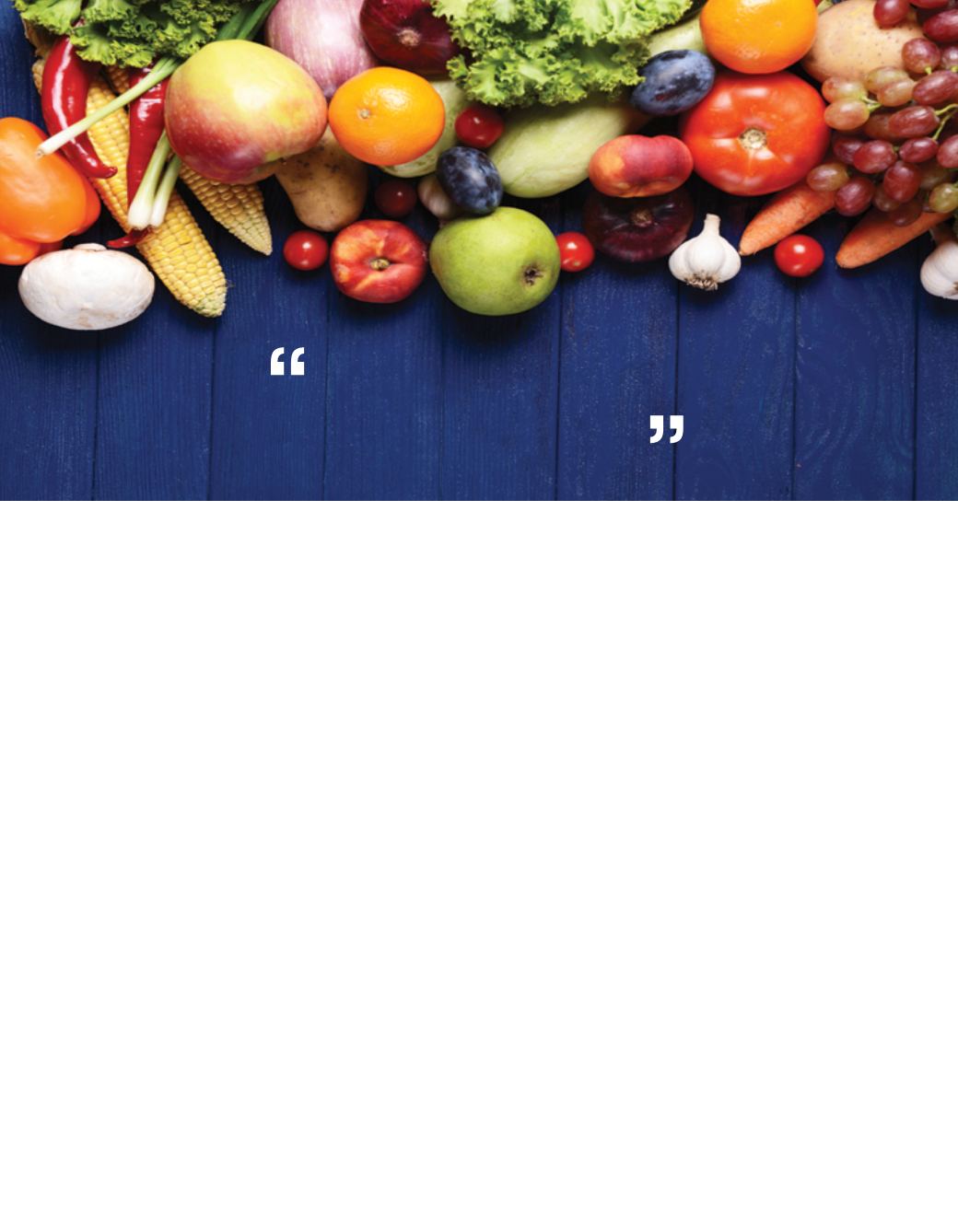
nine, rarely fall sick, and her daughter,
who at the age of two has already
travelled to over 10 different countries,
has never picked up a bug or taken
medication.
Nutrition
Cristina Tahoces’ youngest daughter
developed eczema when she was a
tiny baby. Unwilling to rely on steroid
creams, Tahoces turned to nutrition.
She determined that her daughter’s
major triggers were wheat and refined
sugar, and eliminated them from
her daughter’s diet by prioritising
fresh fruits and vegetables and
supplementing with daily probiotics
and fish oils. Soon, her eczema was
less angry. She was sleeping better and
her stools were better formed.
“If we feed our children a diet
composed of mainly dead, processed
food, we are seriously undermining
their ability to grow healthily and
thrive in their environment. We need
to nourish their growing bodies and
minds with nutrient-rich foods, which
build their immunity and help them
cope with their personal stressors,”
says Tahoces, a former banker turned
nutritionist and founder of Thrive
Nutrition Practice.
A diet rich in whole fruits and
vegetables can set off a remarkable
chain reaction, she advises. They
add water and fibre to the diet and
crowd out artificial sugars. Water and
fibre improve a child’s digestion and
elimination, which clears the body of
toxins that cause inflammation and
weakness. Crowding out artificial
sugars helps to balance a child’s
blood sugar levels, which improves
everything from their attention span
to coping with stress. Less stress might
lead to better sleep, which stimulates
growth and repairs hormones. These
help children grow and be the most
powerful superhero on the playground,
fully equipped to beat those beastly
bugs.
Yoga and Pilates
For Jessica Ye’s daughter, poor self-
image prevented her from being a
playground superhero. Uncomfortable
with the changes in her growing
body, the tall 10-year-old was prone
to slouching. When Ye enrolled
her daughter in a Pilates class, she
discovered the link between emotional
and physical health.
“Pilates helped to correct her
posture and greatly improve her self-
esteem. These factors were causing her
headaches, which are now a thing of
the past. Pilates has also alleviated her
period cramps and mood swings. She’s
much happier at school now,” says the
mother of two.
According to Heather Thomas
Shalabi, director of Flex Studio, yoga
and Pilates improve the way our
bodies use oxygen, and trigger the
release of endorphins (natural pain
and stress busters), which elevate the
mood. Because of this, the practices
stay in the subconscious mind of
practitioners, creating increased body
awareness during daily activities.
These exercises are ideal for stress
management and even depression.
While there are no guarantees, says
Shalabi, yoga has also benefitted some
children with SID (sensory integration
disorder) and SPD (sensory processing
disorder). Through Pilates, children
have seen substantial improvement
in lordosis, scoliosis and kyphosis
(spine disorders) and supination and
pronation (foot disorders).
“Both forms of exercise engage the
mind and body, so children practising
these disciplines develop a highly
integrated communication between
their brains and bodies. The result
They add water and fibre to their diet
and crowd out artifical sugars.
May 2016
51


